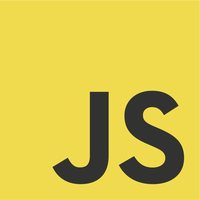[wp_ad_camp_1] If you’ve read this, it merely declares JavaScript can do OOP. It did not talked about other (more advanced) OOP stuff like access modifiers, encapsulation – behaviors and properties, and inheritance. On this article, we’ll talk more on object
Check if a value is in an Array in JavaScript
Given an array of strings, we want to know if a particular string value is in that array. Here we’ll use the Array object’s .indexOf function.
JavaScript scope in functions vs Java scope in methods
For years, JavaScript to me was a mere validation tool or script for web applications. I hated it. I avoided using it. This time JavaScript gets the same respect from me as Java does. If you plan to “own” (or master if you can) JavaScript and you are coming from blocked-scoped languages like Java, C#, C and C++, this is one of key things you need to keep in mind…
Working with Reference Types in JavaScript
JavaScript has both primitive and reference types. It has three primitive types: string, numeric, and boolean. Internally, these are small and fixed-sized collection of bytes that are easily and predictably manipulated at the low (primitive) levels of the JavaScript interpreter. Example of strings are ‘This is a string’ and “This is another string”. Numeric values – 1, and 3.1416. Boolean values – true or false. On the other hand, reference types are different. They include objects (including JS built-in objects), Arrays, and functions. Essentially, they can have any number of properties or elements with various types (both primitives and references), so they cannot be manipulated as easily as fixed-size primitive v
JavaScript Arrays with Elements of Different Data Types
Array with different types of data? Weird stuff! Generally, an array is collection of similar items. In Computer Science 101, this means the items are of the same data type. We have an array of integers, boolean values or strings. But in JavaScript, arrays can have elements of different types.
Type Checking in JavaScript
Okay, JavaScript is a loosely-typed language, which means you do not declare the data type of a variable explicitly. In a basic variable assignment expression, e.g., var i = 4;, the value that assigns to the variable determines the data type of the variable. As you assign different types of data to the same variable, its data type changes as well. Given the nature of JavaScript, finding out what data type a variable represents before using it is very important.
JavaScript Static Properties and Methods
In JavaScript Object Creation and Object Methods and Properties, we talked about methods and properties that are tied to an object. Without an object, these properties are unusable and inaccessible to other codes. There is another type of members – static methods and properties. These are only accessible via the class itself. These are even inaccessible if referenced via objects.
Three ways to mock an object using Mockito
If you’re new to Mockito and have only seen a sample or two on the Internet, you might find other examples create mock objects in different ways using the same framework. As a matter of fact, there are three (3) ways to create mock objects in Mockito.
Void methods and Mockito in Java
When we talk about unit tests, we think about input values and return values to/from methods. Returned values are checked against expected values as a way to verify behavior of codes. But how would you test codes that do not return any values? Essentially, we resort to stubbing out void methods. That is easy in Mockito!
Inheritance in Object-oriented JavaScript
Inheritance in JavaScript is called prototypal inheritance. Objects inherit from objects. When we create an object from a class, [wp_ad_camp_5]
it always inherits from
In Java speak, this is like saying “any class inherits from Object class”.


